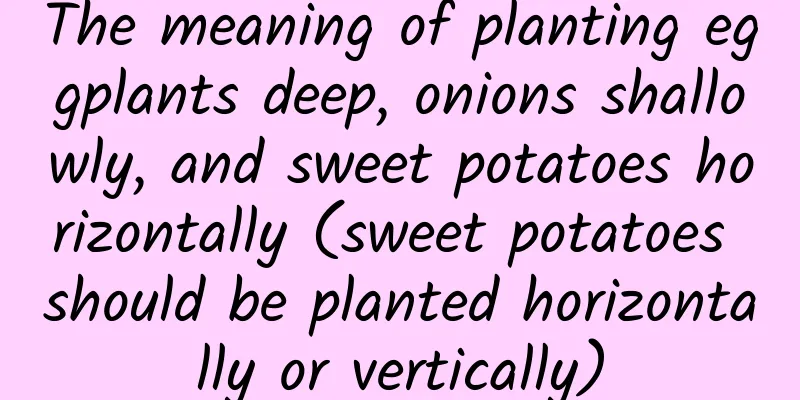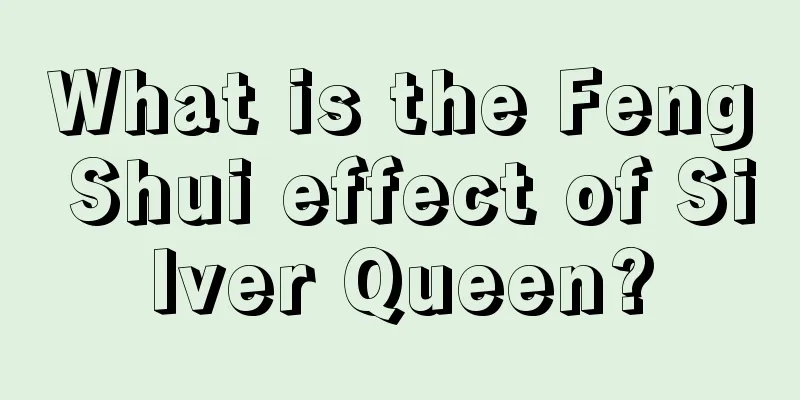The meaning of planting eggplants deep, onions shallowly, and sweet potatoes horizontally (sweet potatoes should be planted horizontally or vertically)

|
Some netizens say "plant eggplants deep, plant sweet potatoes horizontally, and plant onions vertically". What does this mean? Let's talk about them separately. 1. Deep Planting EggplantCucumbers should be planted with soil clumps to prevent them from spreading out. The planting depth should be such that the soil clumps are level with the ground or slightly lower. Eggplants should be planted slightly deeper, that is, "without necks". The eggplant plant can grow to more than 1 meter tall, with stems and branches growing horizontally, generally about 1 meter in length, with many branches and producing many fruits. Although the eggplant stems are woody, they produce many eggplants. In addition, the woody stems produce adventitious roots, and the root system is shallow, so there is a "top-heavy" feeling, and if you are not careful you may end up falling over. In order to avoid lodging and increase the root system, eggplant should be planted deeply, with the soil burying height slightly higher than the height of the seedlings in the bed, but not too deep. 2. Plant sweet potatoes horizontallySweet potatoes are called sweet potatoes or yams here, and are produced by seedling cultivation. Sweet potato seedlings can be planted straight, obliquely, shallowly, horizontally, by modified horizontal planting, by hooks, etc. Different planting methods vary in yield and quality, but can be adapted to different soils and arid areas. The depth and number of nodes of sweet potato seedlings have a great impact on their survival and the formation of sweet potatoes. If the number of nodes of sweet potato seedlings buried in the soil is more, there will be more empty nodes, and the yield may not be high. Generally, 4-5 nodes are better. Moreover, the deeper the seedlings are buried in the soil, the worse the ground temperature and ventilation are, which is not conducive to survival and high yield and quality. Generally, more than 10 cm is better. Sweet potato horizontal planting is also called horizontal planting, that is, the seedlings are planted horizontally in the soil. In this way, the depth of soil penetration is shallow and the number of nodes in the soil is large. In this way, each node of the sweet potato is in a soil layer that is conducive to the production of sweet potatoes, so there are many sweet potatoes produced, the sizes are relatively uniform, and its yield-increasing advantage can be fully utilized. It is undeniable that horizontally planted tomatoes have slightly poorer drought resistance and are more labor-intensive to plant. 3. Planting onions verticallyWhen we buy green onions, we basically buy those with straight and tall white stalks. We don't like those with short and crooked white stalks, or we only buy them if the price is low. The bending of onion stalks is mostly caused by not being straight when planted. Therefore, when cultivating commercial onions on a large scale, it is required that the onion seedlings be planted vertically in the loose soil at the bottom of the ditch. With multiple soil cultivation in the later stage, white, long, straight and beautiful onions will be produced. We have a lot of green onions here, and we are also one of the bases for exporting green onions. Those who plant green onions each get a green onion branch. Use the lower end of the onion fork to press down the base of the onion root, and insert the onion seedling vertically into the loose soil at the bottom of the ditch, reaching the depth where the outer leaves fork. It should not be inserted too deep, so as to achieve the effect of "even top and bottom". Moreover, the heart leaves of the onion should be about 10 cm above the ditch surface. If it is too deep, no seedlings will sprout and the growth will not be vigorous. If it is too shallow, the length of the onion white will be reduced. my country is a big agricultural country. Agricultural proverbs are created by farmers who have worked for a long time and play a great role in guiding farmers in agricultural production in a certain period. Even in today's technologically advanced world, agricultural proverbs still have strong vitality and value, and we need to carry them forward and improve them. |
Recommend
Can poppy seedlings be eaten as vegetables? What will happen if you eat them?
1. Can it be eaten as a vegetable? Poppy seedling...
How to grow and water the money tree
The money tree is currently a popular large indoo...
Try growing these three plants with just "water" and they will still grow vigorously without changing the "pots"!
Huahua also grows these three plants at home. Alt...
Cultivation methods and precautions of iron tree potted plants
1. Breeding methods 1. Fertilization: If you want...
Cultivation methods and maintenance matters of old Thousand Buddha Hands
How to grow Thousand Buddha Hands into an old pil...
What to do if rose cuttings do not take root (reasons why rose cuttings only sprout but do not take root)
What should I do if the rose cuttings don't t...
How to water snapdragon, the operation method is very important!
Snapdragon watering requirements Generally speaki...
The leaves of the peace lily are "wrinkled", here are 4 little tips to help it regain its former vitality!
There are so many green leafy plants here, such a...
How to plant gerbera and when and how to plant it
Gerbera planting time African daisy is sown in sp...
How to propagate peony and what to pay attention to
How to propagate peony The ways to propagate peon...
The efficacy and function of agave
1. As a medicinal material This is its most impor...
Can cyclamen bloom in winter?
Does cyclamen bloom in winter? Under normal circu...
How to deal with the water-soluble succulent Huangli
1. What is chemical water Water melting is a phen...
What fertilizer is best for Schefflera? It needs three kinds of fertilizers to grow better.
Schefflera is a plant that likes fertilizer. Ther...
The best time for pruning wampee fruit trees: pruning techniques and management
Kumquat fruit trees need to be pruned regularly, ...









